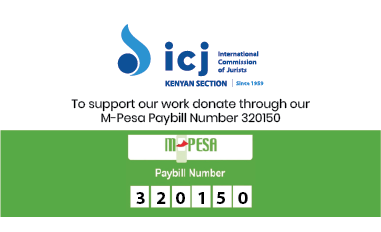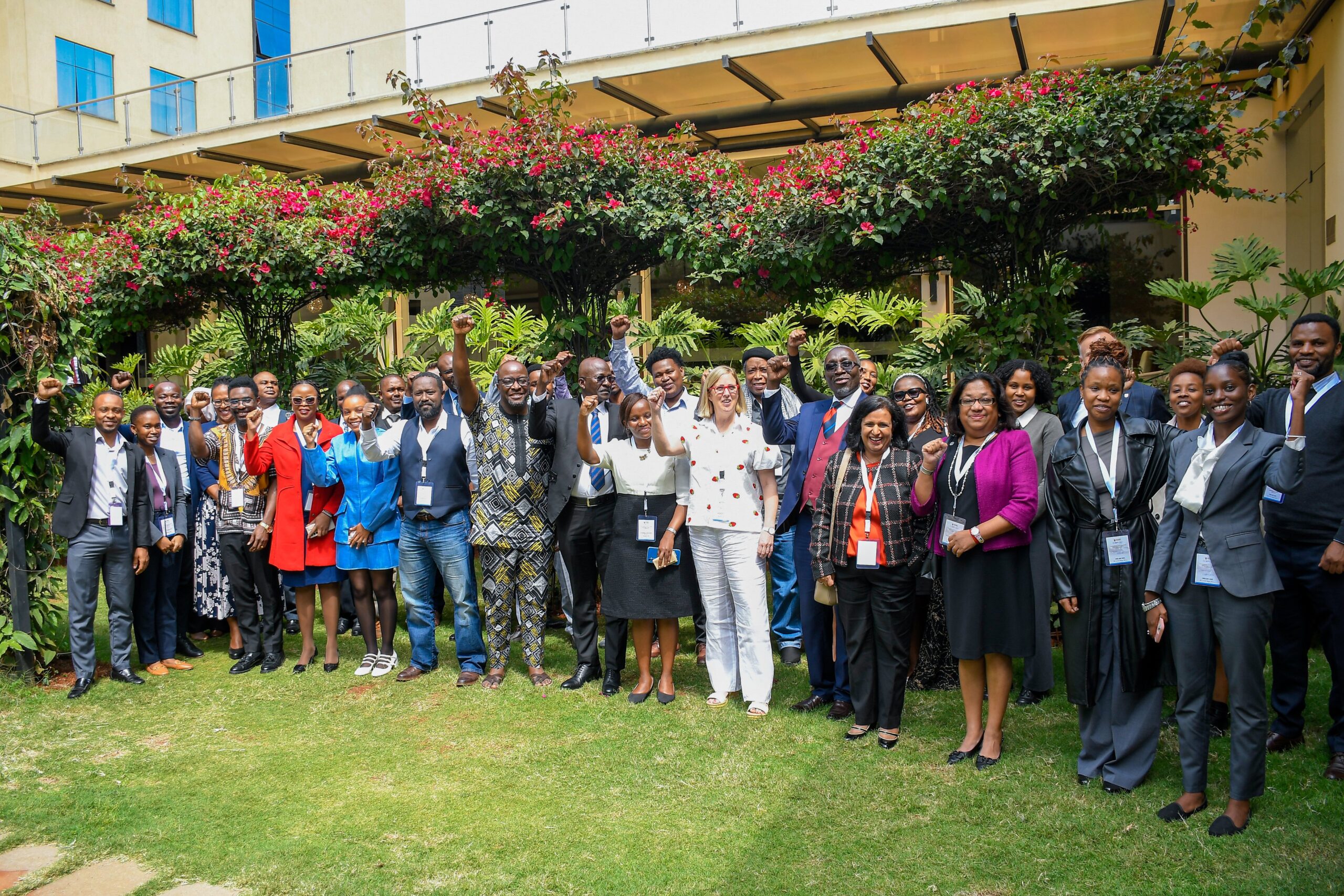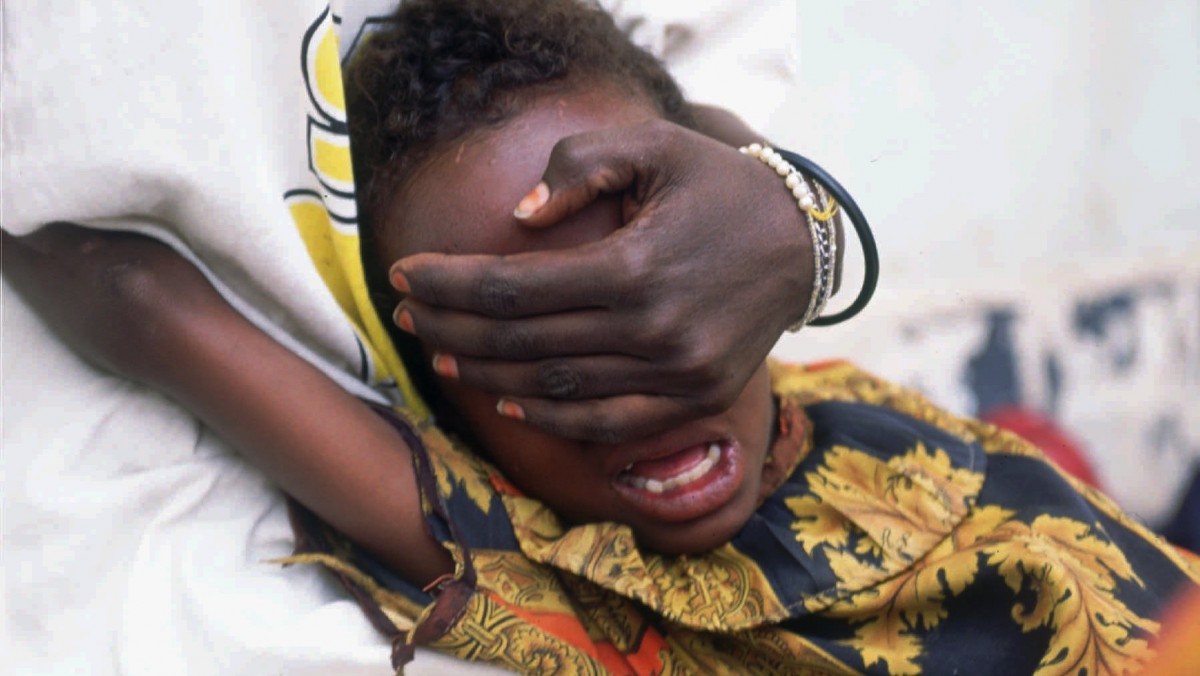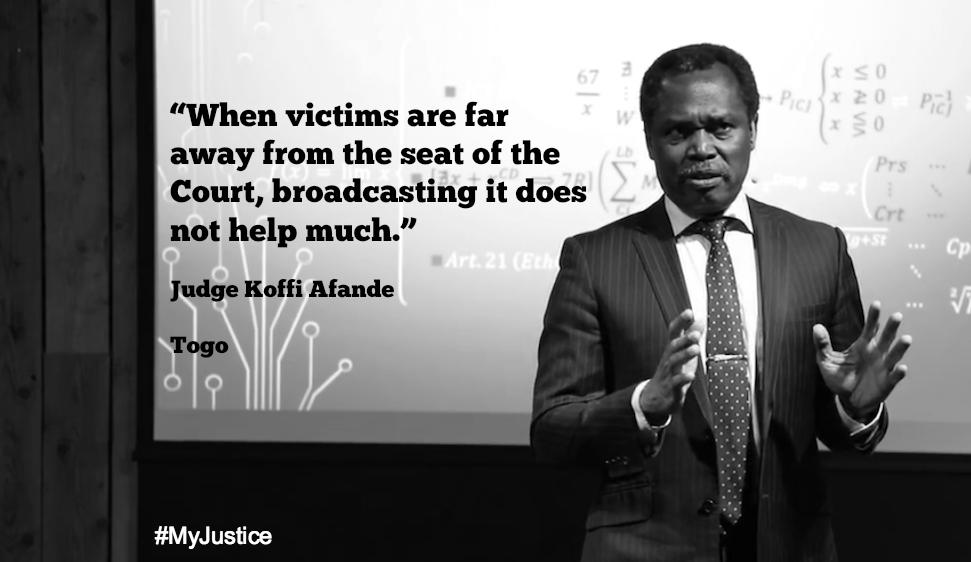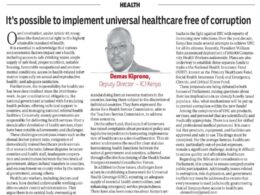In the past, Kenyan communities, diverse as they are, most if not all practiced the ‘female cut’. To them it was a rite of passage, a doorway that every girl was to go through with no queries asked. My 100 year grandmother confirmed this to me in one of the many conversations we have, she is my living ‘history reference’ as I like to call her. At the time, just as the young men, the girls also had to be initiated into adulthood, a culture and tradition that was entrenched to the fiber of these communities, a practice held sacred.
Kenya outlawed FGM in 2011 and enacted the Prohibition of Female Genital Mutilation Act No. 32 of 2011 which created offences and penalties in relation to FGM. Despite the efforts that were made and continue to be made, there are those who still hold the practice dear and vow relentlessly to carry on it with.
But why would one insist on carrying on a practice that has drawn mass criticism and condemnation, banned by regional and international instruments to include The Protocol to the African Charter on Human and Peoples’ Rights on the Rights of Women in Africa, (Maputo Protocol), individuals and organizations have come up with programmes to aid in eliminating this harmful practice entirely within these communities whose ‘culture’ and ‘traditions’ must be carried on.
For instance, the late Efua Dorkenoo, OBE, the Ghanaian born who vehemently preached against FGM and her groundbreaking work on the issue contributed to international recognition of FGM as a public health and a human rights issue. We cannot forget our own Dr. Lina Jebii Kilimo, who like the warrior she is, has led and continues to lead a campaign against this ‘backward’ practice and whose relentless efforts bore fruit, though not without challenges.
Culture and traditional practices, have been fronted as one of the major reasons why FGM continues to be practiced by certain communities in Kenya, it still remains the constant thorn in the flesh. Why did a particular community practice this ‘rite’ on the girl child? Passage into womanhood, preventing promiscuity and of course carrying on with culture and traditions. There being no identified health benefits of FGM, the question that lingers is; should the premise on culture and traditions be the anchor on which legalization of this ‘act’ should rest?
Strides were made to ensure equality was a reality to the girl child, who had been forgotten and the boy empowered more. The tides changed and the girl was empowered, she was given a reason to dream, the path had been cleared and there was light in what could have been described as a dark tunnel. The young girls in these communities who hold FGM ‘sanctimoniously’ were robbed of their innocence, too young to decided and scared to say NO! Progress was made with enactment of the promulgation of the Constitution 2010, enactment of a statute that not only criminalises FGM but also provides for stiff penalties to deter the harmful practice. Individuals, like Dr. Jebii have fought to have the practice terminated for good. The alternative ‘rite of passage’ does not seem, in my opinion, to be a tune that is pleasing to the ears of the persons who champion for the ‘cut’.
Girls in these communities, have dreams, goals and ambitions that can only be achieved if such practices are done away with. These ‘culture’ becomes a breeding ground for other vices to include forced early marriages. The fight for these girls to realise their dreams cannot be taken aback by propelling unlawful harmful practices.
I trend carefully here, bearing in mind of the case pending before the High Court in Machakos, and barred by the principle of sub judice, I cannot comment on the matter but I’ll give my opinion that will not go into the merit or demerit of the case.
How then is prohibiting FGM discriminatory? 27th August 2010, at Uhuru Park, Kenyans and people around the world witnessed the promulgation of a new Constitution, this was a new dawn. With the new grund norm came a robust Bill of Rights well penned in Chapter Four, well and elaborate rights indeed. Article 27 provides for equality and freedom from discrimination. Article 27 (1) provides that every person is equal before the law and has the right to equal protection and equal benefit before the law. Sub-Article (2) further states that equality includes the full and equal enjoyment of all rights and fundamental freedoms.
Equal protection before the law in my opinion includes protection from harmful practices that endanger the lives of persons in any given setting or community. The law found it fit to protect the girl child who comes from a community where FGM is rampant, it provided the shield that would shelter her from cultures and practices that cap their dreams. Act No 32 of 2011 was that shield that came to provide that equal protection to these young girls.
I pose a question; would Parliament in its wisdom enact a law against a practice that was not harmful? If the answer to this is in the negative, then equal protection from harmful practices to the girl child in these communities was accorded.
Sub Article 27 (2) underpins the fact that there should be equal enjoyment of all rights and fundamental freedoms. These girls in these communities have been forced to undergo the cut at a young age, their rights here have already been grossly violated. Article 53 (1) (d) provides that a child has the right to be protected from among others […] harmful cultural practices. The mention of harmful cultural practices at the helm of them is FGM. These young girls whose voices are muted by the loud cries of upholding cultures and traditions are entitled under the law to be protected from these harmful practices. The protection of these children, is not to the parents only but to the entire community, it’s a job everyone is entitled to pick up though they did not apply for it. There is dignity in upholding a child’s right. How then, can this be termed as discrimination?
Article 27 (3) provides that women and men have the right to equal treatment, including the right to equal opportunities in political, economic, cultural and social spheres. The right to equal treatment on the cultural aspect does not connote not even for a second that FGM should be carried out on women because circumcision is practiced on men. The initiation of men goes back to Biblical times where God asked Abraham to be circumcised as a covenant between him and God. The drafters of the Constitution did not have this sub-article well pasted to enhance and advance the carrying on harmful cultural practices. This should never be interpreted to mean that since the supreme law of the land dictates that there should be equal treatment based on culture, that then FGM should be carried out on women freely. This would be a wrong notion and a twisted interpretation of the law. Can be said to be discriminatory?
Article 27 (4) provides that the state shall not discriminate directly or indirectly against any person on any ground including […] culture. It would be interesting to hear where a lady who comes from a community that is known to carry on FGM being discriminated upon because she has not undergone the ‘cut’. There are cultures and traditions that have been practiced and maintained by the diverse communities here in Kenya but are not harmful and have been passed on from generation to generation. The passing of law that prohibits the practices that is harmful is not discriminatory but instead safeguards the wellbeing of would be victims of such practices. With this again, would it be said that it is discriminatory to prohibit FGM?
Article 2 (4) provides that any law, including customary law, that is inconsistent with the Constitution is void to the extent of the inconsistency, and any act or omission in contravention of this Constitution is invalid. Every Act of Parliament is stemmed from the Constitution, this is what legitimise it. Act No 32 of 2011 would be inconsistent with the supreme law if what it prohibits is lawful and not harmful, but the drafters of this law saw the danger that was and thus had it passed. It is thus safe to say, that Act No 32 of 2011 is indeed consistent with the Constitution as it is in line with its principles on protecting, enhancing and safeguarding human rights to include protection against harmful practices.
There are in existent conventions, regional and international that speak against FGM and categorize it as a violation of human rights. They include ;The Protocol on the Rights of Women in Africa (Maputo Protocol), Convention on the Elimination of All Forms of Discrimination against Women (CEDAW), Convention on the Rights of the Child, International Covenant on Civil and Political Rights, International Covenant on Economic, Social and Cultural Rights and Convention against Torture. The In December 2012, the UN General Assembly adopted a resolution (Res L21 revision 1) calling on States to implement laws eliminating FGM among several other recommendations, representing the first time the General Assembly included the elimination of FGM on its agenda.
There are cultural practices and traditions that we still hold dear though many may not agree with them for instance dowry payment. There are those that are harmful and retrospective in that they take people back to decades of old. These practices are not progressive neither are they beneficial to anyone. There needs to be a change in mentality of members of these communities that for a young girl to be a woman she has to be ‘cut’. They need to understand that these practices are harmful to the young girls who are tomorrow’s leaders.
In my opinion legalising a wrong does not make right. Whether FGM would be carried out by a medical practitioner with a vast experience in the field of medicine, the underlying point is it FGM is not beneficial at all. We should champion for change and live in the twenty first century and ‘backward’ cultures need to be abandoned. We need to respect the progress that has been made in fighting this vice that robs young girls of their innocence. The efforts that went into creating a law against FGM the prosecution of offences under it to deter others from engaging in the harmful practice should be respected.
It is sad really, that we are still talking about practice of FGM in the twenty first century, 2018. It is sad that there are young girls who are still being subjected to this barbaric act that does not benefit them at all. In my opinion legalising FGM will not lead to the reduction of the practice, but instead will open a Pandora’s Box where this act would be done in the open, sending a wrong message and killing the progress that has been made to fight it. Care must be taken.
The protection of the wellness of the girl child from harmful cultural practices regardless of culture, in my opinion, is not discriminatory and legalising it should not even be a thought. Human Rights of every individual should be upheld, safeguarded and respected.
By
Wallace M Nderu
Advocate of the High Court and
Legal Researcher
ICJ Kenya

